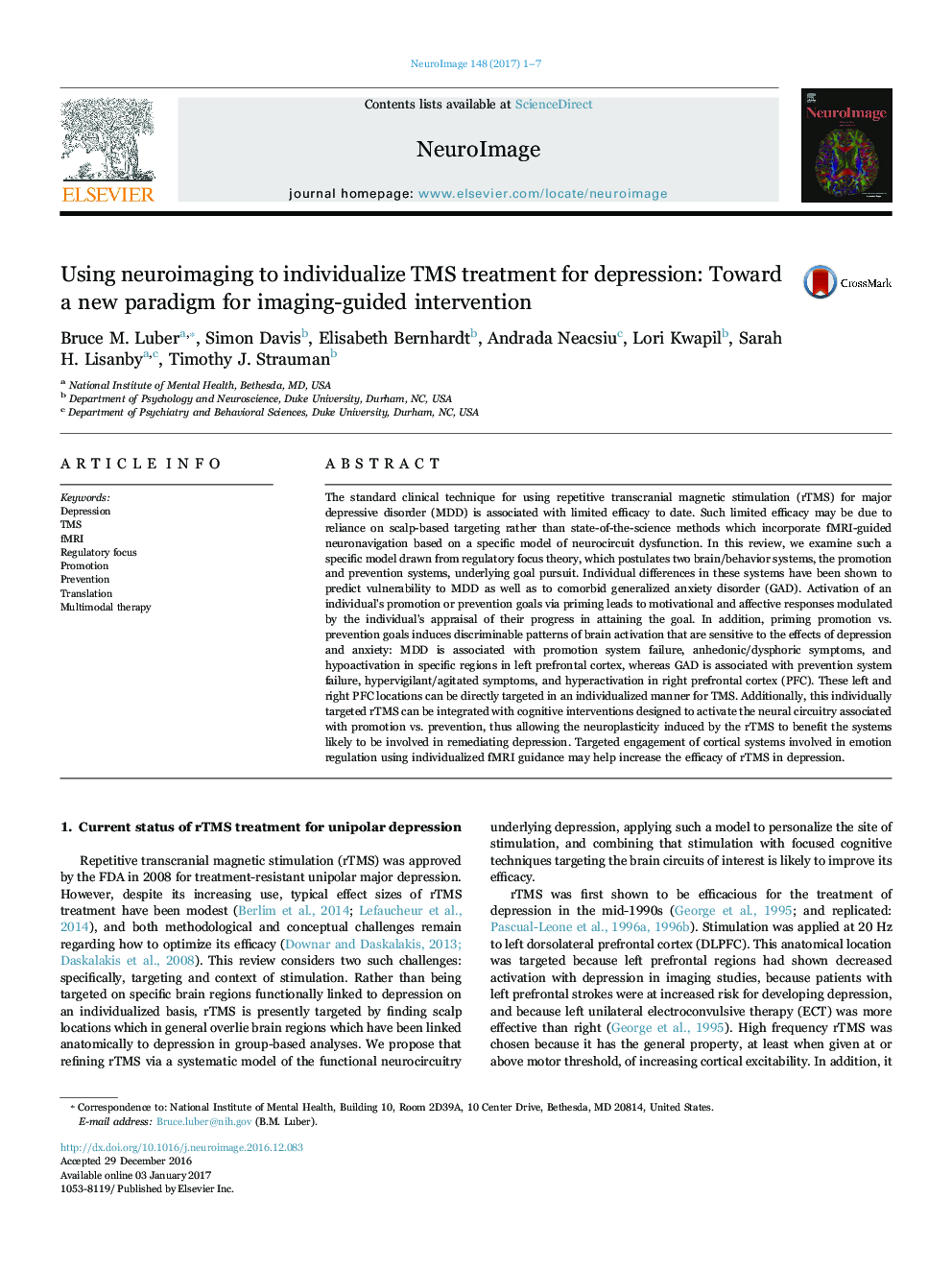| کد مقاله | کد نشریه | سال انتشار | مقاله انگلیسی | نسخه تمام متن |
|---|---|---|---|---|
| 5631272 | 1580862 | 2017 | 7 صفحه PDF | دانلود رایگان |

- rTMS for depression using scalp-based targeting has shown limited efficacy to date
- Using fMRI-guided neuronavigation along with a model of neurocircuit dysfunction may improve the efficacy of rTMS
- In this article we introduce a model of depression drawn from regulatory focus theory
- Our model allows for individually targeted rTMS that engages cortical systems involved in emotion regulation and for combining interventions targeting the same putative circuit
The standard clinical technique for using repetitive transcranial magnetic stimulation (rTMS) for major depressive disorder (MDD) is associated with limited efficacy to date. Such limited efficacy may be due to reliance on scalp-based targeting rather than state-of-the-science methods which incorporate fMRI-guided neuronavigation based on a specific model of neurocircuit dysfunction. In this review, we examine such a specific model drawn from regulatory focus theory, which postulates two brain/behavior systems, the promotion and prevention systems, underlying goal pursuit. Individual differences in these systems have been shown to predict vulnerability to MDD as well as to comorbid generalized anxiety disorder (GAD). Activation of an individual's promotion or prevention goals via priming leads to motivational and affective responses modulated by the individual's appraisal of their progress in attaining the goal. In addition, priming promotion vs. prevention goals induces discriminable patterns of brain activation that are sensitive to the effects of depression and anxiety: MDD is associated with promotion system failure, anhedonic/dysphoric symptoms, and hypoactivation in specific regions in left prefrontal cortex, whereas GAD is associated with prevention system failure, hypervigilant/agitated symptoms, and hyperactivation in right prefrontal cortex (PFC). These left and right PFC locations can be directly targeted in an individualized manner for TMS. Additionally, this individually targeted rTMS can be integrated with cognitive interventions designed to activate the neural circuitry associated with promotion vs. prevention, thus allowing the neuroplasticity induced by the rTMS to benefit the systems likely to be involved in remediating depression. Targeted engagement of cortical systems involved in emotion regulation using individualized fMRI guidance may help increase the efficacy of rTMS in depression.
Journal: NeuroImage - Volume 148, 1 March 2017, Pages 1-7